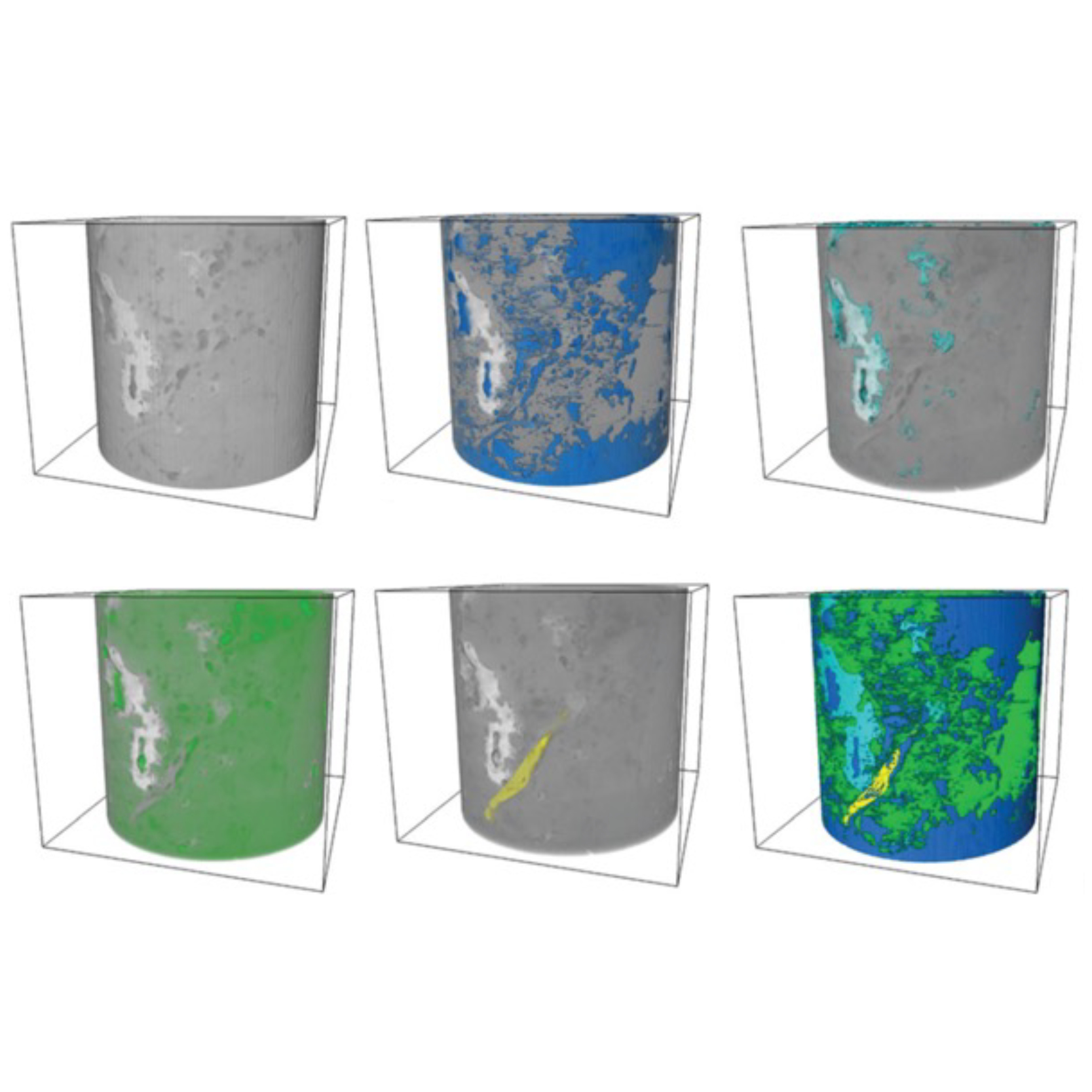
3D Microstructure of Soft Magnetic Elastomer Membrane
Soft magnetic elastomer membranes enable fast magnetic actuation under low fields. In our project, we… Read More
Events & Resources
News, Events and Resources from NXCT Partners
This project aims to improve the understanding of environmental degradation in syntactic foams, particularly focusing on moisture uptake, which is crucial for their applications in aerospace and marine industries.
The key objective is to develop a micromechanical model, emphasizing the size and distribution of microspheres within the foam structure. To achieve this, 3D X-ray micro-computed tomography, a non-destructive imaging technique, is employed to obtain precise scans of the foam samples. These scans are meticulously analysed to determine the microspheres’ diameter and distribution, providing valuable insights into the foam’s microstructural characteristics. A micromechanical modelling framework has been established using Abaqus, and the data from the CT scans will refine the model’s geometry, significantly enhancing its accuracy. The model’s predictions will be validated against quasistatic and dynamic experimental results, ensuring reliability and applicability. The National X-ray Computed Tomography (NXCT) has supported this work by funding access to the CT scan facilities at the University of Manchester, crucial for acquiring high-quality imaging data. X-ray CT has provided essential, detailed, non-destructive insights into the internal structure of the syntactic foams, proving invaluable for this study. The developed framework will be beneficial for future researchers exploring micromechanical modelling of syntactic foams, advancing the understanding of these materials. The research is expected to lead to the development of more resilient and durable materials, offering significant benefits to industries dependent on high-performance materials, such as aerospace and marine sectors. Future research will continue to delve into the complexities of these materials under various environmental conditions, further refining the models and expanding their practical applications.
“The significance of this work lies in its potential to revolutionize our understanding and modelling of syntactic foams, leading to the development of more resilient and durable materials for critical applications in aerospace and marine industries. By leveraging advanced imaging and micromechanical modelling, we aim to enhance material performance under challenging environmental conditions, thereby extending their lifespan and reliability.”
Ashish Bhanderi, Imperial College London, MSc Student
Collaborator: Dr. Gustavo Quino Quispe, Imperial College London




Soft magnetic elastomer membranes enable fast magnetic actuation under low fields. In our project, we… Read More

Nowadays, the increasing capability of micro-manufacturing processes enables the manufacture of miniature products with extremely… Read More

Injection of CO2 into shale reservoirs to enhance gas recovery and simultaneously sequester greenhouse… Read More